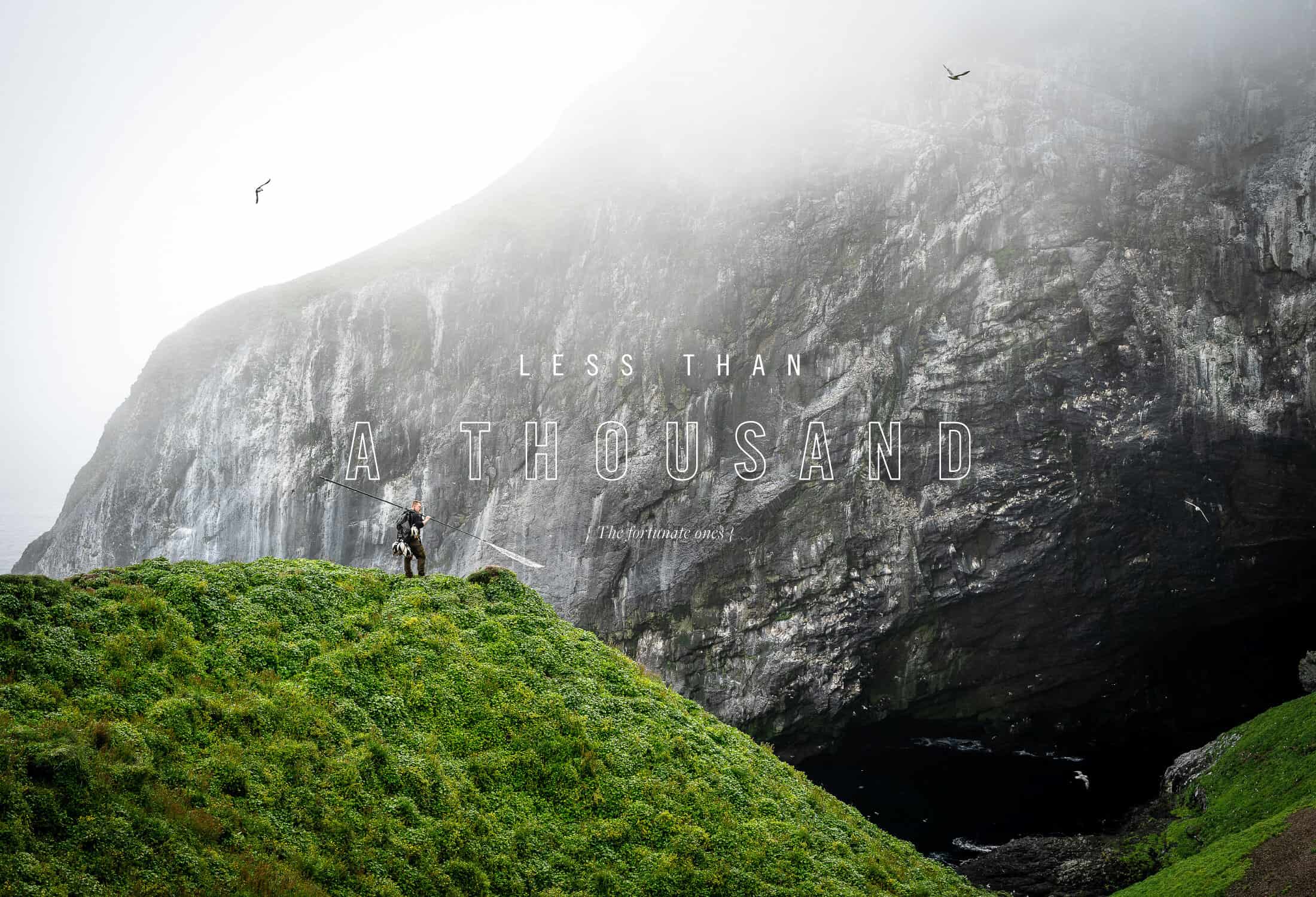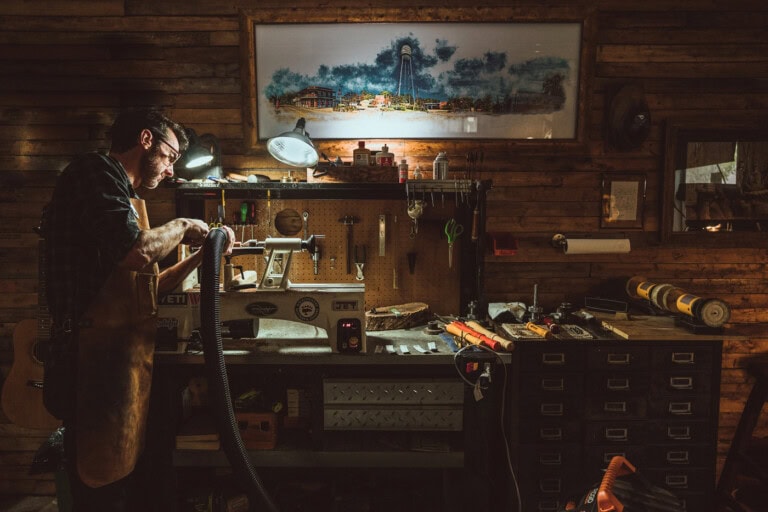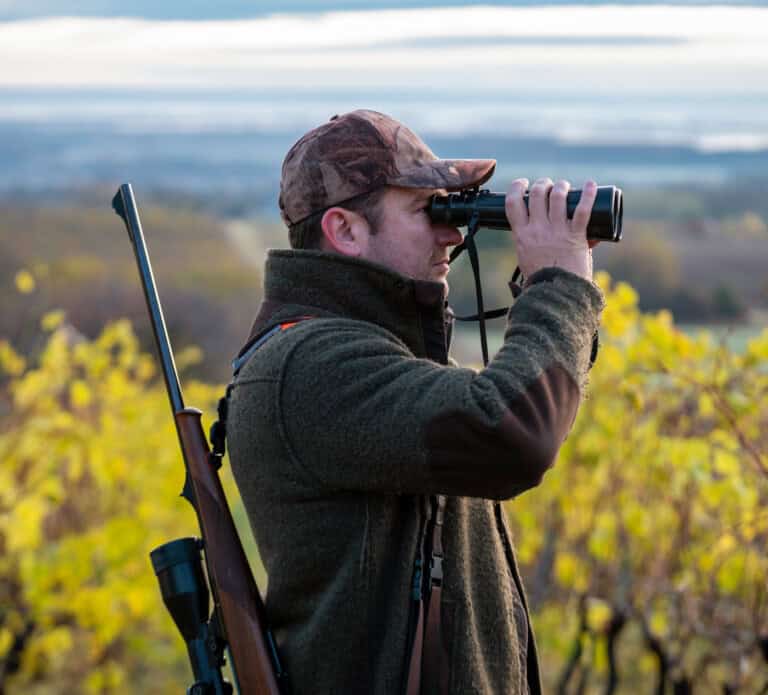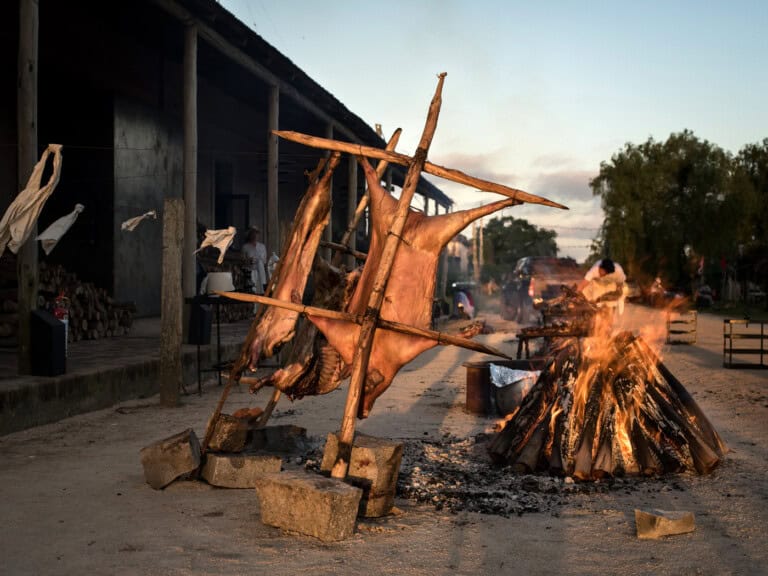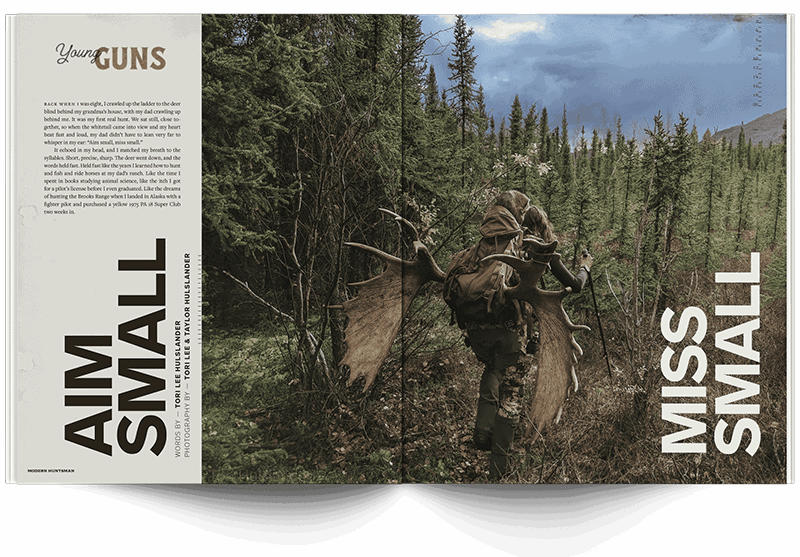ICELAND | SKRÚÐUR
As I face into an eastern breeze, a fine spray of sea water causes me to squint through the droplets. I watch, transfixed at the white band across the pectoral fin of a minke whale. As we cut gentle waves in our Zodiac, the first of many northern gannets circle the boat above us, before tailing our wake. This procession follows us in increasing numbers, seemingly pleased that we ventured to their remarkable home — the isle of Skrúður.
I embarked on this adventure with my good friend, hunter and photographer Robert Cabrera, accompanied by Óðinn Logi, a seasoned puffin hunter and East Coast native. We’ve been circling the island, soaking in place names, legends, and hunting stories from Óðinn’s youth. At a young age he became a full-time puffin hunter during the summer months, learning the ropes from his relatives. Like them, he would become a guardian of the island.The breath-taking scenery is more than we expected, and while writing down these memoirs, I struggle to give it the justice it deserves.
Diving puffins, guillemot, cormorants, and harbor seals watch our every move. Their intrigue is more of curiosity than fear, implying that the sight of humans is quotidian in their world. Óðinn claims that since the settlement of Iceland in 872 CE, less than 1,000 people have stepped foot on the island, a claim I have no reason to second guess.
The strong currents around the narrow cove we intend to anchor in soak up every ounce of horsepower the Zodiac’s motor can provide as we ride the waves, with bare, exposed rocks on both sides, beaten and weathered by centuries of rough seas.
Once secured in the calm of the inlet, we unload the equipment from the boat, ferrying the tools in a human
